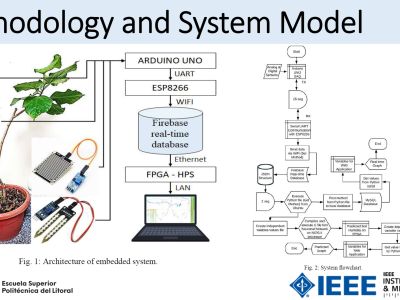Heart disease

- Citation Author(s):
- Submitted by:
- Fatma Yagin
- Last updated:
- DOI:
- 10.21227/henx-kg41
- Data Format:
- Research Article Link:
- Links:
 1600 views
1600 views
- Categories:
- Keywords:
Abstract
Acute myocardial infarction (AMI) is the main cause of death in developed and developing countries. AMI is a serious medical problem that necessitates hospitalization and sometimes results in death. Patients hospitalized in the emergency department (ED) should therefore receive an immediate diagnosis and treatment. Many studies have been conducted on the prognosis of AMI with hemogram parameters. However, no study has investigated potential hemogram parameters for the diagnosis of AMI using an interpretable artificial intelligence-based clinical approach. The purpose of this research is to implement the principles of explainable artificial intelligence (XAI) in the analysis of hematological predictors for AMI. In this retrospective analysis, 477 (48.6%) patients with AMI and 504 (51.4%) healthy individuals were enrolled and assessed in predicting AMI. Of the patients with AMI, 182 (38%) had an ST-segment elevation MI (STEMI), and 295 (62%) had a non-ST-segment elevation MI (NSTEMI). Demographic and hematological information of the patients was analyzed to determine AMI. The XAI approach combined with machine learning approaches (Extreme Gradient Boosting, XGB; Adaptive Boosting, AB; Light Gradient Boosting Machine, LGBM) was applied for the estimation of AMI and distinguishing subgroups of AMI (STEMI and NSTEMI). The SHAP approach was used to explain the predictions intuitively. After selecting the 10 most important hematological parameters for AMI, the LGBM model achieved 83% and 74% accuracy for prediction of AMI, and distinguishing subgroups of AMI (STEMI and NSTEMI), respectively. SHAP results showed that neutrophil (NEU), white blood cell (WBC), platelet width of distribution (PDW), and basophil (BA) were the most important for AMI prediction. Mean corpuscular volume (MCV), BA, monocytes (MO), and lymphocytes (LY) were the most important hematological parameters that distinguish STEMI from NSTEMI. The proposed model serves as a valuable tool for physicians, facilitating the diagnosis, treatment, and follow-up of patients with AMI and distinguishing subgroups of AMI (STEMI and NSTEMI). Analyzing readily accessible hemogram parameters empowers medical professionals to make informed decisions and provide enhanced care to a wide range of individuals.
Instructions:
Acute myocardial infarction (AMI) is the main cause of death in developed and developing countries. AMI is a serious medical problem that necessitates hospitalization and sometimes results in death. Patients hospitalized in the emergency department (ED) should therefore receive an immediate diagnosis and treatment. Many studies have been conducted on the prognosis of AMI with hemogram parameters. However, no study has investigated potential hemogram parameters for the diagnosis of AMI using an interpretable artificial intelligence-based clinical approach. The purpose of this research is to implement the principles of explainable artificial intelligence (XAI) in the analysis of hematological predictors for AMI. In this retrospective analysis, 477 (48.6%) patients with AMI and 504 (51.4%) healthy individuals were enrolled and assessed in predicting AMI. Of the patients with AMI, 182 (38%) had an ST-segment elevation MI (STEMI), and 295 (62%) had a non-ST-segment elevation MI (NSTEMI). Demographic and hematological information of the patients was analyzed to determine AMI. The XAI approach combined with machine learning approaches (Extreme Gradient Boosting, XGB; Adaptive Boosting, AB; Light Gradient Boosting Machine, LGBM) was applied for the estimation of AMI and distinguishing subgroups of AMI (STEMI and NSTEMI). The SHAP approach was used to explain the predictions intuitively. After selecting the 10 most important hematological parameters for AMI, the LGBM model achieved 83% and 74% accuracy for prediction of AMI, and distinguishing subgroups of AMI (STEMI and NSTEMI), respectively. SHAP results showed that neutrophil (NEU), white blood cell (WBC), platelet width of distribution (PDW), and basophil (BA) were the most important for AMI prediction. Mean corpuscular volume (MCV), BA, monocytes (MO), and lymphocytes (LY) were the most important hematological parameters that distinguish STEMI from NSTEMI. The proposed model serves as a valuable tool for physicians, facilitating the diagnosis, treatment, and follow-up of patients with AMI and distinguishing subgroups of AMI (STEMI and NSTEMI). Analyzing readily accessible hemogram parameters empowers medical professionals to make informed decisions and provide enhanced care to a wide range of individuals.







